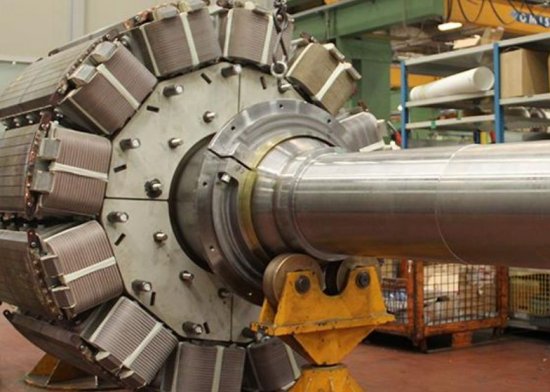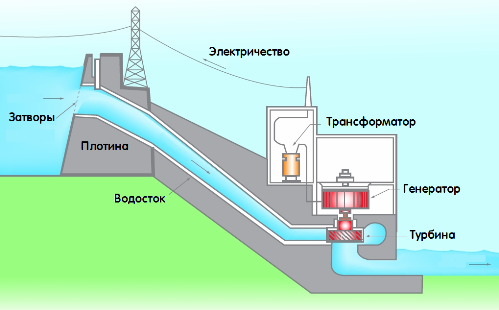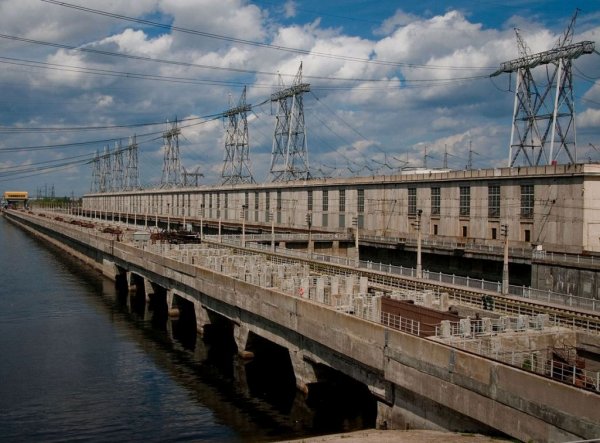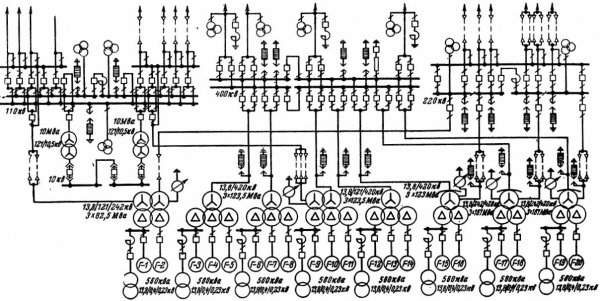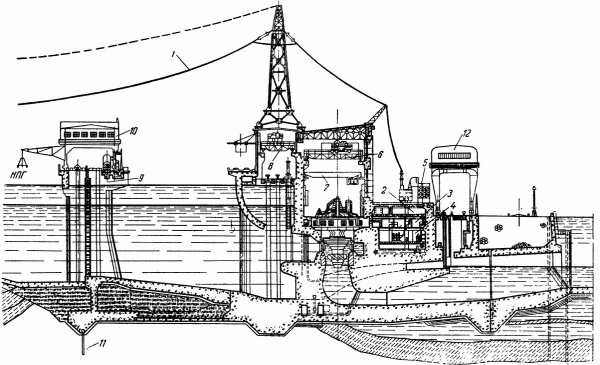The device and principle of operation of the hydroelectric plant
Since ancient times, people have used the driving force of water. They ground flour in mills powered by water currents, rafted heavy tree trunks downstream, and generally used hydropower for a wide variety of tasks, including industrial ones.
The first hydroelectric plants
At the end of the 19th century, with the beginning of the electrification of cities, hydroelectric plants began to gain popularity very quickly in the world. In 1878, the world's first hydroelectric plant appeared in England, which then powered only one arc lamp in the art gallery of the inventor William Armstrong ... And by 1889, there were already 200 hydroelectric plants in the United States alone.
One of the most important steps in the development of hydropower was the construction of the Hoover Dam in the USA in the 1930s. As for Russia, already in 1892, the first four-turbine hydroelectric power plant with a capacity of 200 kW was built here in Rudnia Altai on the Berezovka River, designed to provide electricity for the mine drainage of the Ziryanovsky mine.So, with the development of electricity by mankind, hydroelectric power plants marked the rapid pace of industrial progress.
The principle of operation of the hydroelectric plant
Today, modern hydroelectric plants are huge structures with a gigawatt of installed capacity. However, the principle of operation of any hydroelectric plant generally remains quite simple and almost exactly the same everywhere. The water pressure applied to the blades of the hydraulic turbine causes it to rotate, and the hydraulic turbine, in turn, connected to the generator, turns the generator. The generator generates electricity which and fed to the transformer station and then to the power line.
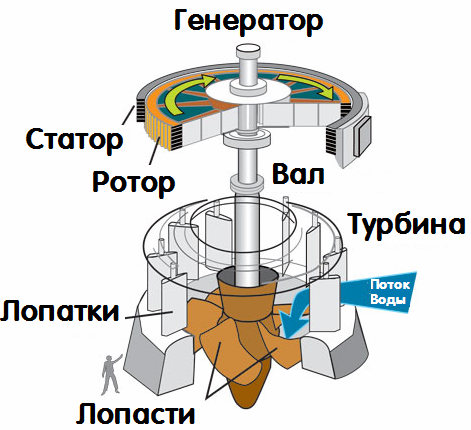
Hydro Generator Rotor:
In the turbine hall of the hydroelectric power plant, hydraulic units are installed that convert the energy of the water flow into electricity, and all the necessary distribution devices, as well as control and monitoring devices for the operation of the hydroelectric power plant, are located directly in the building of the hydroelectric power plant.
The output of a hydroelectric plant depends on the amount and pressure of water passing through the turbines. Direct pressure is obtained due to the directed movement of the water flow. This can be water built up at the dam when a dam is built at a particular location on the river, or the pressure occurs due to flow diversion—that is, when water is diverted from the channel through a special tunnel or channel. So, hydroelectric power plants are dam, derivative and dam.
The most common dam hydroelectric plants are based on a dam that blocks the river bed.Behind the dam, the water rises, accumulates, creating a kind of water column that provides pressure and pressure. The higher the dam, the stronger the pressure. The world's tallest dam, at 305 meters high, is the 3.6 GW Jinping Dam on the Yalongjiang River in western Sichuan in southwest China.
Hydroelectric plants are of two types. If the river has a slight dip, but is relatively abundant, then with the help of a dam blocking the river, a sufficient difference in water levels is created.
A reservoir is formed above the dam, which ensures uniform operation of the station throughout the year. Near the bank under the dam, in close proximity to it, a water turbine is installed, connected to an electric generator (near the dam station). If the river is navigable, then a lock is made on the opposite bank for the passage of ships.
If the river is not very rich in water, but has a large immersion and fast current (for example, mountain rivers), then part of the water is diverted along a special channel, which has a much lower slope than the river. This channel is sometimes several kilometers long. Sometimes field conditions force the channel to be replaced by a tunnel (for power stations). This creates a significant difference in level between the outlet of the canal and downstream of the river.
At the end of the channel, the water enters a pipe with a steep slope, at the lower end of which there is a hydraulic turbine with a generator. Due to the significant difference in level, the water acquires a large kinetic energy, sufficient to power the station (derivation stations).
Such stations can have a large capacity and belong to the category of regional power plants (cf. Small hydroelectric plants).In the smallest plants, the turbine is sometimes replaced by a less efficient, cheaper water wheel.
The building of the Zhigulev hydroelectric plant from the springs
Schematic diagram of the electrical connections of the Zhigulev HPP
A section through the building of the Zhigulev hydroelectric plant. 1 — outputs for opening RU 400 kV; 2 — floor of 220 and 110 kV cables; 3 — electrical equipment floor, 4 — transformer cooling equipment; 5 — bus channels connecting the voltage windings of the generator of the transformers in "triangles"; 6 — a crane with a load capacity of 2X125 tons; 7 — a crane with a load capacity of 30 tons; 8 — a crane with a load capacity of 2X125 t; 9 — garbage retention structure; 10 — a crane with a load capacity of 2X125 tons; 11 — metal tongue; 12 — a crane with a load capacity of 2X125 tons.
The Zhigulev HPP is the second largest hydroelectric plant in Europe, in 1957-1960 it was the largest hydroelectric plant in the world.
The first unit of the station with a capacity of 105 thousand KW was put into operation at the end of 1955, in 1956 another 11 units were put into operation for 10 months. 1957 — the remaining eight units.
A large number of new, in some cases unique, energy facilities have been installed and are operating at hydroelectric power stations.
Types of hydroelectric power plants and their devices
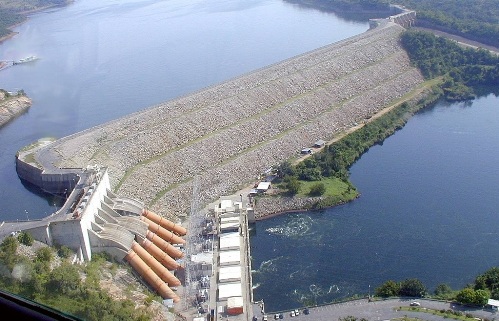
In addition to the dam, the hydroelectric plant includes a building and switchgear. The main equipment of the hydroelectric plant is located in the building, turbines and generators are installed here. In addition to the dam and building, the hydroelectric plant may have locks, spillways, fish passages, and boat lifts.
Each hydroelectric power plant is a unique structure, therefore the main distinguishing feature of hydroelectric power plants from other types of industrial power plants is their individuality. By the way, the largest reservoir in the world is located in Ghana, it is the Akosombo reservoir on the Volta River. It covers 8,500 square kilometers, which is 3.6% of the area of the entire country.
If there is a significant slope along the river bed, then a derivation hydroelectric plant is erected. It is not necessary to build a large reservoir for dams, instead the water is directed only through specially erected water channels or tunnels directly to the power plant building.
Small daily regulation basins are sometimes arranged in derivative hydroelectric power stations, which enable the pressure to be controlled and thus the amount of electricity generated, depending on the overload of the power grid.
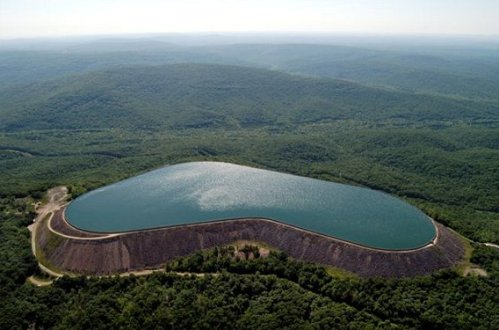
Pumped storage facilities (PSPP) are a special type of hydroelectric plant. Here, the station itself is designed to smooth out daily fluctuations and peak loads power system, and thus improve the reliability of the power grid.
Such a station can work both in generator mode and in storage mode, when pumps pump water into the upper basin from the lower basin. A basin in this context is a basin object that is part of a reservoir and adjacent to a hydroelectric plant. Upstream is upstream, downstream is downstream.
An example of a pumped storage facility is the Taum Sauk Reservoir in Missouri, built 80 kilometers from the Mississippi, with a capacity of 5.55 billion liters, allowing the power system to provide a peak capacity of 440 MW.

